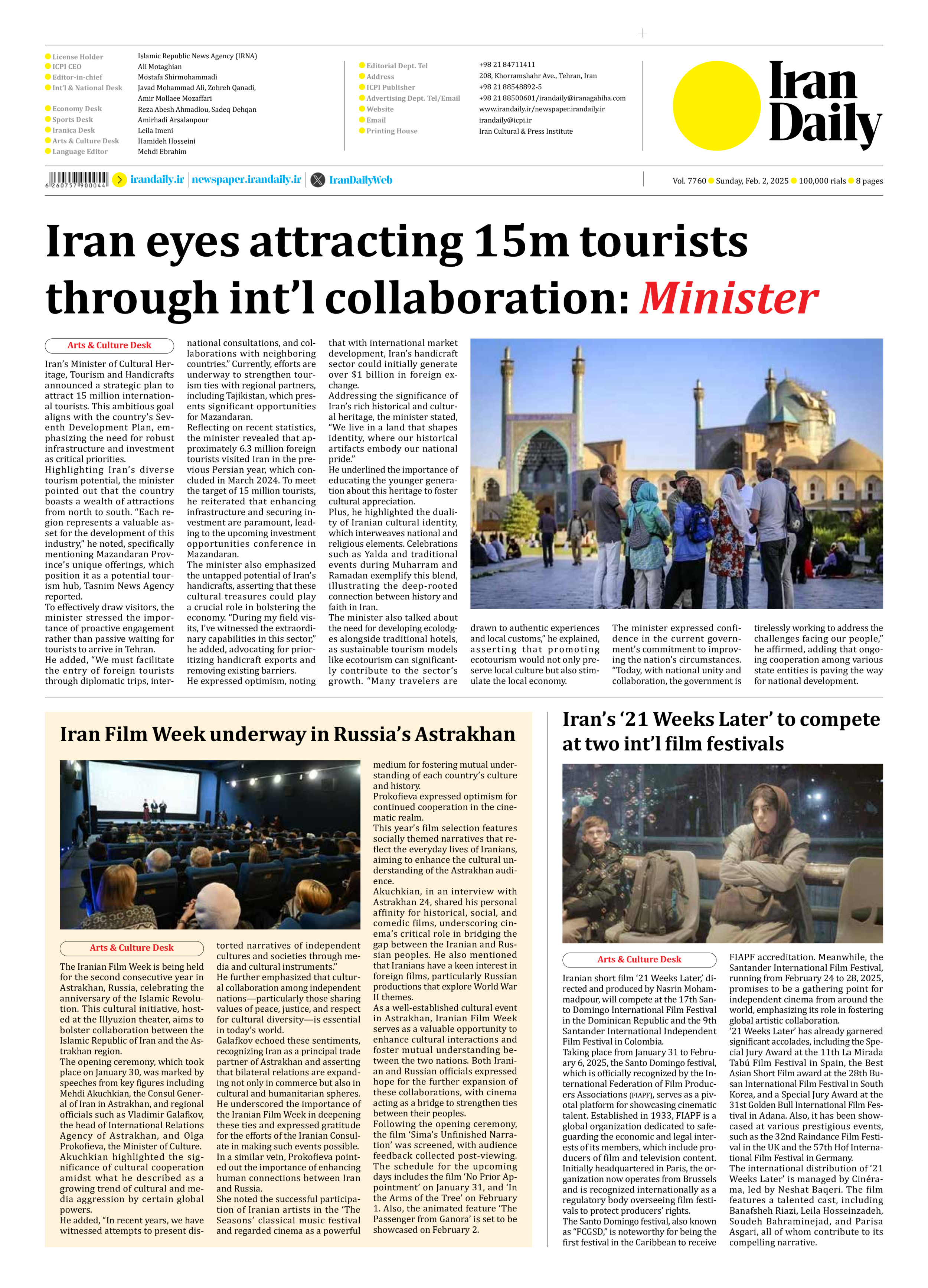
Iran eyes attracting 15m tourists through int’l collaboration: Minister
Iran’s Minister of Cultural Heritage, Tourism and Handicrafts announced a strategic plan to attract 15 million international tourists. This ambitious goal aligns with the country’s Seventh Development Plan, emphasizing the need for robust infrastructure and investment as critical priorities.
Highlighting Iran’s diverse tourism potential, the minister pointed out that the country boasts a wealth of attractions from north to south. “Each region represents a valuable asset for the development of this industry,” he noted, specifically mentioning Mazandaran Province’s unique offerings, which position it as a potential tourism hub, Tasnim News Agency reported.
To effectively draw visitors, the minister stressed the importance of proactive engagement rather than passive waiting for tourists to arrive in Tehran.
He added, “We must facilitate the entry of foreign tourists through diplomatic trips, international consultations, and collaborations with neighboring countries.” Currently, efforts are underway to strengthen tourism ties with regional partners, including Tajikistan, which presents significant opportunities for Mazandaran.
Reflecting on recent statistics, the minister revealed that approximately 6.3 million foreign tourists visited Iran in the previous Persian year, which concluded in March 2024. To meet the target of 15 million tourists, he reiterated that enhancing infrastructure and securing investment are paramount, leading to the upcoming investment opportunities conference in Mazandaran.
The minister also emphasized the untapped potential of Iran’s handicrafts, asserting that these cultural treasures could play a crucial role in bolstering the economy. “During my field visits, I’ve witnessed the extraordinary capabilities in this sector,” he added, advocating for prioritizing handicraft exports and removing existing barriers.
He expressed optimism, noting that with international market development, Iran’s handicraft sector could initially generate over $1 billion in foreign exchange.
Addressing the significance of Iran’s rich historical and cultural heritage, the minister stated, “We live in a land that shapes identity, where our historical artifacts embody our national pride.”
He underlined the importance of educating the younger generation about this heritage to foster cultural appreciation.
Plus, he highlighted the duality of Iranian cultural identity, which interweaves national and religious elements. Celebrations such as Yalda and traditional events during Muharram and Ramadan exemplify this blend, illustrating the deep-rooted connection between history and faith in Iran.
The minister also talked about the need for developing ecolodges alongside traditional hotels, as sustainable tourism models like ecotourism can significantly contribute to the sector’s growth. “Many travelers are drawn to authentic experiences and local customs,” he explained, asserting that promoting
ecotourism would not only preserve local culture but also stimulate the local economy.
The minister expressed confidence in the current government’s commitment to improving the nation’s circumstances. “Today, with national unity and collaboration, the government is tirelessly working to address the challenges facing our people,” he affirmed, adding that ongoing cooperation among various state entities is paving the way for national development.







